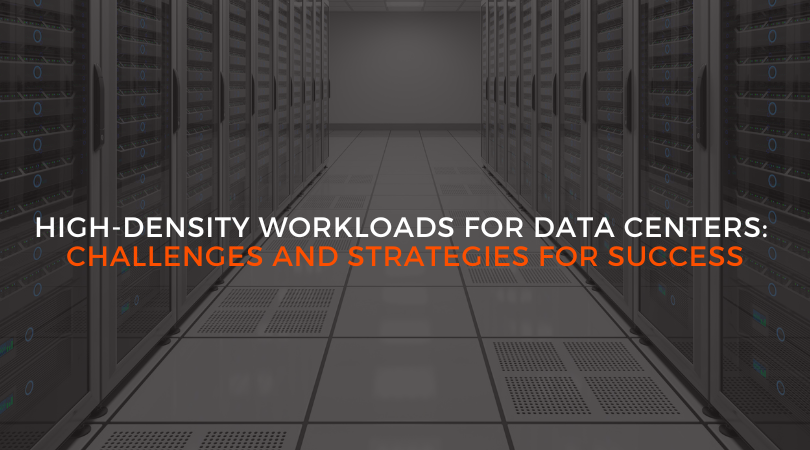The data center landscape is evolving rapidly. As businesses push for more computing power within tighter spaces, high-density workloads are no longer the exception, they’re the new standard. AI, machine learning, real-time analytics, and high-performance computing are driving this shift, promising efficiency, scalability, and cost savings. But with these benefits come critical challenges.
How do you prevent high-density environments from becoming high-risk environments? The answer lies in understanding the hidden vulnerabilities: heat management, power stability, environmental risks, and operational precision. Without strategic planning, data centers run the risk of performance degradation, increased downtime, and costly hardware failures.
Let’s dive into the key risks and, more importantly, the solutions that future-proof high-density data centers.
The Hidden Risks in High-Density Environments
Inadequate Cooling Systems
High-density workloads generate immense heat, often exceeding the capacity of traditional air-cooling systems. Without proper thermal management:
- Chips can overheat, leading to thermal throttling, performance degradation, or even physical damage to the silicon.
- Persistent high temperatures reduce the lifespan of servers and critical components, necessitating frequent replacements and increasing operational costs.
Power Supply Issues
Fluctuations in power, such as brownouts or spikes, can wreak havoc on sensitive high-performance chips. These disruptions lead to:
- Voltage stress, which accelerates hardware failure.
- Increased downtime risks when insufficient redundancy (e.g., uninterruptible power supplies or backup generators) is in place.
Moisture and Condensation Risks
To tackle heat challenges, many data centers turn to liquid cooling systems. While highly effective, these systems carry inherent risks:
- Leaks or improper designs can expose components to moisture, resulting in short circuits or corrosion.
- Condensation due to poor environmental control can further damage sensitive hardware.
Inadequate Airflow and Poor Ventilation
Dense rack setups without sufficient airflow paths often create hotspots. This uneven cooling leads to:
- Stress on specific components, increasing the likelihood of failure.
- Inefficient thermal management that affects overall system performance.
Software Overloading and Failures
High-density workloads demand precise software optimization and workload distribution. Poorly configured systems can:
- Overload certain components, leading to overheating or unexpected shutdowns.
- Exacerbate thermal management issues if firmware bugs or OS failures hinder cooling responses.
Dust and Particulate Buildup
Dust accumulation on components can act as an insulator, trapping heat and blocking airflow. Over time, this reduces cooling efficiency and increases hardware stress.
Human Error
Mistakes in maintenance, configuration, or handling of equipment are common contributors to downtime. Even a small oversight, such as misplacing cables or failing to tighten connections, can result in significant damage.
Lack of Real-Time Monitoring and Automation
Without advanced monitoring systems, anomalies in temperature, power, or performance often go unnoticed. This can lead to avoidable chip stress and, ultimately, failure.
Strategies for Mitigating Risks and Optimizing Performance
Advanced Cooling Solutions
To manage the intense heat generated by high-density racks:
- Implement liquid cooling, immersion cooling, or hybrid methods designed to handle extreme workloads.
- Optimize airflow with dynamic management techniques and hot aisle/cold aisle configurations.
Power Infrastructure Improvements
Ensure reliable and consistent power delivery with:
- High-efficiency power supplies and robust redundancy systems, such as N+1 or 2N configurations.
- Surge protection and real-time monitoring to maintain power quality.
Environmental Controls
Prevent damage caused by moisture and temperature fluctuations by:
- Regularly inspecting and maintaining cooling systems to avoid leaks or inefficiencies.
- Using sensors to closely monitor humidity and temperature in the data center environment.
Enhanced Monitoring and Automation
Proactive monitoring can prevent issues before they escalate:
- Deploy AI-powered Data Center Infrastructure Management (DCIM) tools to predict and address potential problems.
- Enable automated shutdown protocols to protect hardware during critical events, such as temperature spikes or power failures.
Regular Maintenance
Periodic upkeep ensures long-term reliability:
- Clean and inspect equipment regularly to remove dust and debris.
- Update firmware and software to resolve bugs and optimize resource allocation.
Training and Protocols
Equip your team with the knowledge and procedures needed for success:
- Train staff on the unique demands of high-density workloads and ensure clear maintenance protocols are in place.
- Conduct regular drills and simulations to prepare for potential emergencies.
Building Resilient High-Density Data Centers
The transition to high-density workloads is inevitable but risk doesn’t have to be. By proactively addressing cooling, power, and operational challenges, data centers can unlock the full potential of these high-performance environments. With the right strategies in place, businesses can not only meet growing computational demands but also build a resilient, future-ready infrastructure that minimizes downtime and maximizes efficiency.
Are your data center strategies keeping pace with the future? Now is the time to take a proactive approach to high-density success. Need help exploring your options? Get in touch with Donwil.

